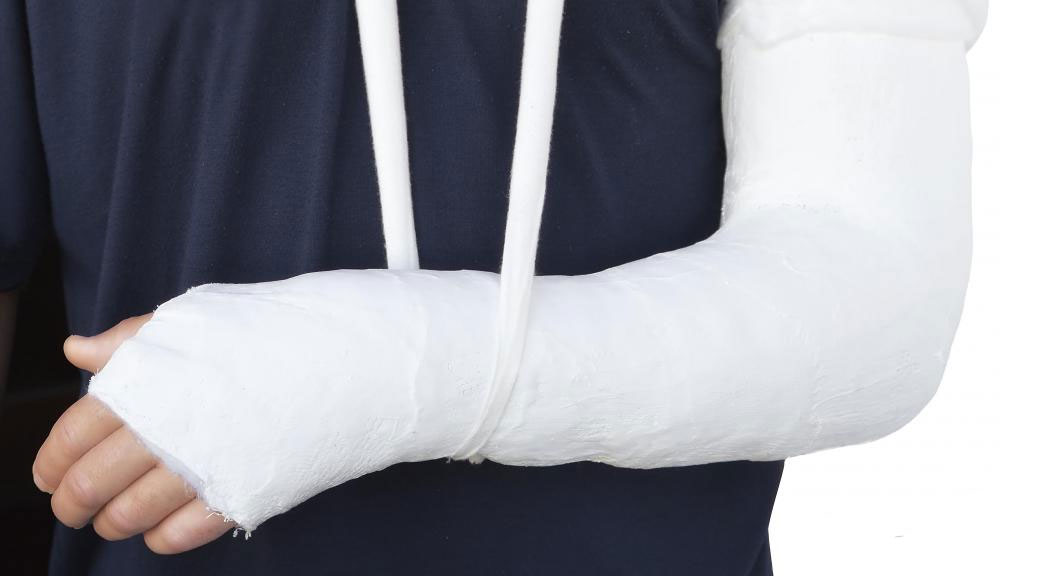Post traumatic conditions of upper and lower limbs
Fractures

Bone fracture is an injury characterized by partial or complete interruption of bone tissue and it may occur as a consequence of direct impact (traumatic fracture of healthy bones) – where discontinuation of bone is caused by some mechanical force which overcomes bone strength; or as a consequence of some disease related to changes in bone tissue structure and characteristics (spontaneous or pathological fracture) and this kind of fracture may occur after some slight trauma (e.g. fractures due osteoporosis). Most often limb fractures occur. However, some other bones, such as chest bones, head bones and spine may be broken as well.
Based on the fact whether skin or subdermal tissue was damaged during occurrence of fracture and whether there is or there is not communication of the fracture with the environment, we differ: open fracture (which is harder for management and recovery) and closed fracture.
As per severity, fracture may be: complex – where a bone is damaged at two or more locations and simple fracture or cracking – without separation of broken parts of a bone.
As per acted mechanical force, fracture may be: direct – it occurs at the location where mechanical force acted (it is commonly more severe) and indirect fracture – which is more common and it occurs when some force acts at distant location or at distant parts of limbs.
A type and severity of fracture depends on injury mechanism, power of force acting on a bone and direction of its action, as well as on characteristics of the bone itself (strength and type of bones, a part of bone affected by traumatic force).
Clinical picture differs certain and uncertain signs of a fracture. Certain signs include pathological movability, physical examination is accompanied with severe pains, cracking sound, deformation of longitudinal limb axis at the location of fracture. Uncertain signs include swelling, pain caused by pressure, pain during movements of damaged body part, changes in skin color, muscle cramps.
In order to start with bone healing process, it is necessary to put broken parts of bones one against another, in a way that these are in contact with each other, and this creates conditions for smooth execution of complex processes which as a final result have a complete structural and functional recovery of a broken bone.
In modern medicine, two basic treatments for bone fractures are applied: conservative (immobilization with a plaster cast) and surgical method where broken parts of bones are connected with metal bone supports. A selection of the fracture treatment method depends on patient’s conditions and type of fracture, and decision is made by an orthopedist. As soon as patient’s condition allows, rehabilitation should be initiated. The final goal of physical therapy is to achieve, as complete as possible, functional recovery of a patient.
Physical therapy in so called early stage implies application of electrical and magnetic therapies which may be applied over the plaster cast, as well as in case when there is a metal in the area of fracture. Static exercises are significant for an injured limb.
A physiatrist, based on a healing level of broken bone, clinical finding and possible complications, but when patient's condition and injury itself allow, carefully and strictly individually doses and combines various physical agents in order to accelerate bone healing, reduce swelling and pain, normalize local blood circulation, prevent contractures, increase joint movability, and strengthen muscles. In some later stages of rehabilitation, hydrokinesitherapies and all forms of balneo (salutary mud and mineral water)-physical agents may be applied, and a physiatrist has to take care on contraindications for application of each agent individually.
With timely, well dosed and adequate physical treatments, we make recovery after bone fractures shorter and contribute to patient's successful functional recovery and faster return to normal life.
